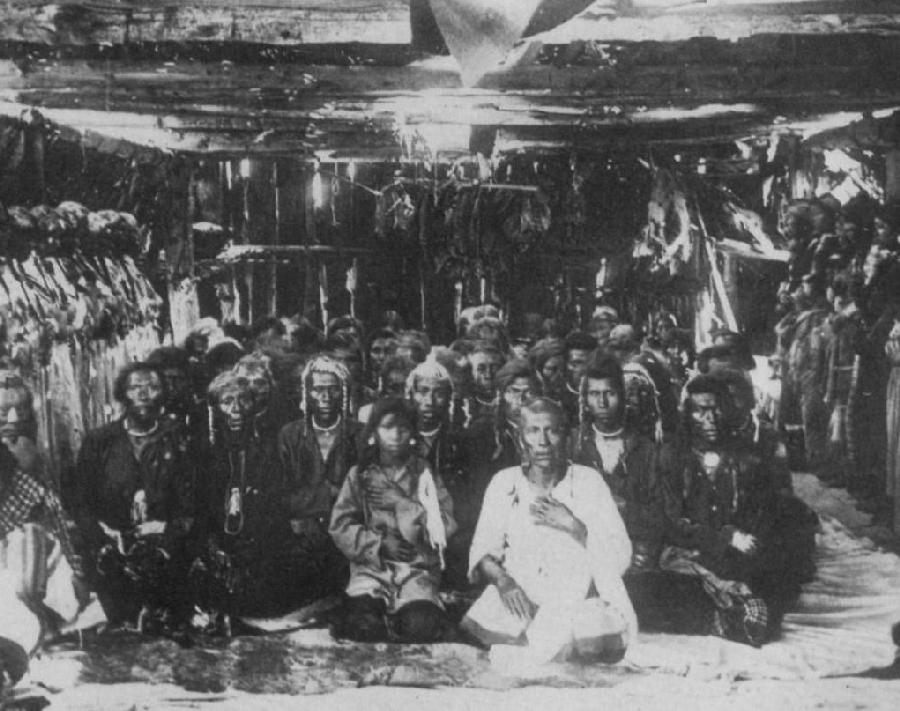
Native American Tribes: The Nez Perce

Figure 1.--When the Nez Pearce encountered Lewis and Clarke and probably saved the expedition (1805), photography had not yet been invented. Here we see members of the Dreamer Cult (1860). The Dreamer Cult and aaociated Drean Dance was a religious revitalization movement. Much of their land by this time had aleady been lost to Americans moving west. We are not sure who the boy is in the center or why he is there among the elders. Source: Smithsonian Institution.
|
|
The Nez Perce were an important tribe in the Plateau/Great Basin area. They lived in scattered villages. At the time Lewis and Clarke encountered them, they numbered about 4,000 number (1805). They were talented horsemen and amassed the largest horse herd on the continent. They seasonally fished for salmon along the Clearwater and Snake rivers and hunted buffalo. They also used camas plants and other bulbs found in mountain meadows to make bread. Like the Shoshone, another plateau people, the Nez Perce lacked guns or ammunition. This left them at a disadvantage vulnerable to their northern enemies, who were obtaining firearms from Canadian traders. In oarticular it threatened their ability to hunt buffalo. The Nez Perce would annually make a challenging passage over the Bitterroot Mountains to hunt buffalo on the plains. Nez Perce clothing was similar to other Plateau people. Men wore breechcloths with leather leggings and buckskin shirts. The women wore long deerskin dresses. Both men and women wore moccasins. Women dresses were fringed as were a warrior's shirt. Decoration included beadwork, shells, and painted designs. After contact with Americans, they began wearing cloth dresses and vests, which they often decorated with beading and other traditional ornaments. The most famous Nez Perce leader was Chief Joseph. Attempting to renain indepndent, he and hus warriors fought 13 battles with the U.S. calvalry and treeked 1,600 miles in an effort to reach Canada. He finally surrendered after the Battle of Bear Paw Mountains. It was the last important battle between Native Americans and the U.S. Calvalry. It was here where Chief Joseph made his famous statement “From where the sun now stands I will fight no more forever.
HBC

Navigate the Boys' Historical Clothing Web Site:
[Introduction]
[Activities]
[Biographies]
[Chronology]
[Clothing styles]
[Countries]
[Bibliographies]
[Contributions]
[FAQs]
[Glossaries]
[Images]
[Links]
[Registration]
[Tools]
[Boys' Clothing Home]
Navigate the Boys' Historical Clothing ethnic pages:
[Return to the Main Plateau/Great Basin cultural area page]
[Return to the Main Native American ethnic page]
[Return to the Main tribal page]
[Return to the Main ethnic page]
[German]
[Greek]
[Irish]
[Scottish]
Navigate the Boys' Historical Clothing Native American pages:
[Ethnic]
[Dance]
Created: 10:12 AM 11/15/2013
Last updated: 10:12 AM 11/15/2013



